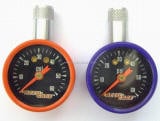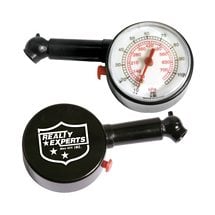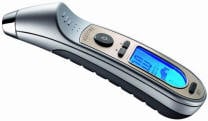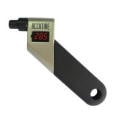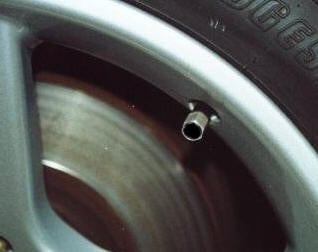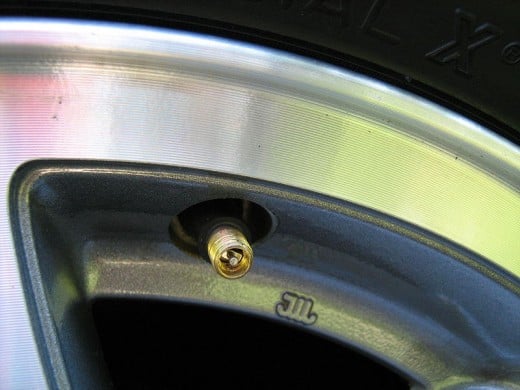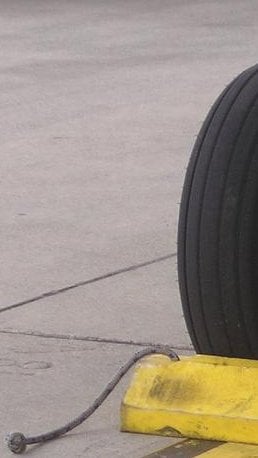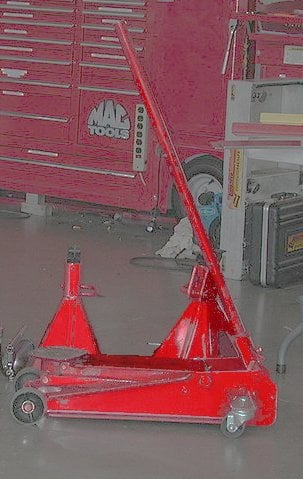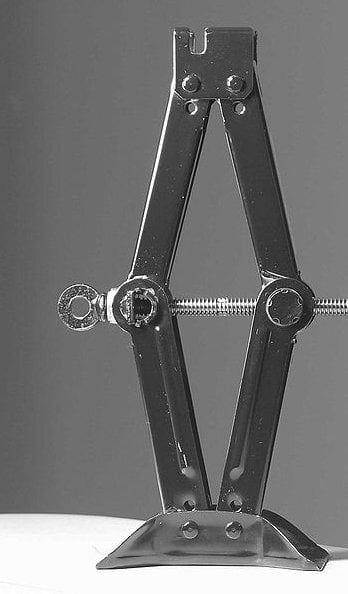The Fine Art of Tire Maintenance
Save Money on Tire Maintenance
This hub is one in a series about the money you can save by doing some, if not most of your own auto maintenance. Not only will "do-it-yourself" save you money (over taking your jalopy to mechanic), it will increase your gas mileage which, of course, will also save you money.
Additionally, by servicing your own car you will become more familiar with it which is a good thing. The benefit to this closer relationship to your vehicle is this, by knowing your car well you will also have a much better idea when it needs maintenance and Tender Loving Care.
To help you with this I will include photos and step-by-step instructions on how to perform this maintenance. Ladies, you don't have to be (or look like) a body builder to perform any of these tasks, but some of them might require the assistance of a willing male. Enjoy!






Air Your Tires
This is one of the most commonly overlooked items on your car. If you tires "seem" to be holding air fine, check them once a week. I know this is likely to cost you 25¢ or maybe even 50¢ to pay for air at your local gas station, but it's worth the cost if you save on gas.
Especially in these days of $3.00 + gas!
It's easy too! First, get yourself a good air gauge. You can purchase one of these at any auto parts store. It doesn't have to be an expensive digital model. A good dial gauge is perfectly fine. The row of pictures (at right) are excellent examples of accurate and easy to use gauges.
Next
take your car to a filling station (or friend with an air compressor)
and pay for it (if
necessary). Note that many stations will provide free air with a
fill-up. Some states even require the gas station to offer free air
with a fill-up.
- Stretch the hose to the farthest tire.
- Step on the hose to pin it to the ground. Then remove the valve cap on the tire. (see picture)
- Check the air-pressure. It should be between 28 and 30 pounds. Be sure to press the gauge firmly onto the valve. You should not hear any air hissing out if it's properly pressed onto the valve stem. A bit of air escaping as you do this is normal.
- If the air pressure is off add a bit of air by pressing the air outlet into the open stem and pressing the "fill" lever. Again a bit of air escaping while doing this is normal.
- Air pressure should vary no more than one or two pounds between the two back tires or two front tires. Most cars built today have air pressure markings inside the driver door or glove compartment.
When driving around tires heat up, not a lot, but enough to cause the air in a tire to expand. If you check your tire pressure after a drive it will likely be off, higher, due to heated air in the tire. This discrepancy is usually about two to four pounds on the plus side. e.g. thirty-four (34) pounds per square inch (PSI) on a warm tire translates to thirty (30) PSI on a cold tire.
Note: If you want easier steering, add two to four more pounds of air to the front tires than the rear tires. You'll be amazed at the difference in steering effort and it won't hurt your tires. Especially if you rotate them (see next section). This is especially effective in front wheel drive cars which have more weight over the front tires.
Tire Pressure Dangers
Do not over-inflate your tires. First, and most importantly, inflating your tires beyond the recommended tire pressure could cause a blow-out. This is where the structure of the tire fails and you get an instant flat. If this happens while you are driving, your car could suddenly veer in the direction of the flat. This could cause you to hit other cars or objects along the road. Not a good thing.
Also, do not over-inflate while airing your tires. Having the tire fail while you are airing it could cause serious injury to you or anyone standing nearby.
Additionally, over-inflating your tires causes them to wear faster.



Rotate Your Tires
This is one of those things you might want a mechanic to do, but if you have good upper body strength and are fit you should be able to pull this off.
You should be very careful doing this. Having a car fall on your foot or leg will ruin your day. Also should the car roll off of the jacks it could cause property damage, injury or even death.
Roughly every 10,000 miles you should rotate your tires. Since the front
tires get more wear, from turning and stopping, you will want to even out that
wear by moving the rear tires to the front and the front tires to the rear. Rear tires generally get less wear.
When
rotating radials move the tires/wheels on the same side of the
car. e.g. move the right rear to the right front; right front to right
rear. On the left side of the car do the same. Radials should not be moved from one side of the car to the other; only from front to back or back to front.
Only move the tires/wheels from one side of the car at a time. Do not rotate a right rear to the left front. In other words, you want to move the tires from front to back on the same side of the car. Bias ply tires, which are very rare these days, can be rotated left rear to right front and right rear to left front. Note that radial tires get you better gas mileage than bias ply tires which is why bias ply are rare these days.
Rotating your tires will extend the life of those tires since the front tires get more wear. This will also help when the tires gradually loose their balance due to wear.
- Set the parking brake or put the car in gear if it's a manual shift. If automatic make sure the car is in "Park."
- Place a wheel chock (see picture) on the rear tire that will remain on the ground. This will insure that the car does not roll off of the jack-stands.
- Slightly loosen the lug nuts (yup, that's what they are called) on the two wheels you are going to rotate. Do not completely remove these nuts just yet. It's easier to loosen these nuts when the wheels are on the ground.
- Raise the front and rear of the car on the same side.
- Use jack-stands to keep the wheels off the ground. Do not use the tire jack to keep the car in the air. Only use the tire jack to raise the car. Use jack-stands to keep it there.
- Completely remove the lug nuts on one wheel and place them in a cup or coffee tin you have for that purpose. You don't want to lose these.
- Remove the wheel (this make take some effort as they are heavy) and roll it to the new location.
- Remove the other wheel as in steps 5 and 6 and roll it to the old location.
- Place the tire on the hub and hand tighten the lug-nuts on that wheel. Lining up the studs on the wheel can also be a hassle.
- Place the other tire on it's new hub location and hand tighten it's lug nuts on that wheel.
- Using the jack, lower both ends of the car, one end at a time and remove the jack-stands. Using a wrench, completely tighten the
lug nuts on the front and rear tires.
- Do not over-tighten; you should be able to loosen the nuts without power tools if you get a flat. 1/4 to 1/2 turn after the nut is snug, with your body weight, should be enough. This is important. You do not want to be driving down the freeway and witness one of your wheels passing you.
Tire Rotation Dangers
Because you will be lifting at least half the weight of the car, this can be a very dangerous maintenance exercise. You should always make sure your car is on a flat level surface. If the car is not properly parked and wheel chocks used, it could roll off of the jacks and cause serious injury or property damage.
Balance Your Tires
This is one for the service station/tire place.The equipment required is quite expensive unless you buy a cheap bubble balance, but the problem with these balances is that they are not very accurate. You will also need to be familiar with lead weights and how they are attached to your wheels. For these reasons this is one of those things better left to the pros.
Tires are being made better these days, especially the name brands like GoodYear, Michelin, FireStone, Yokohama, and Bridgestone. Still, a perfectly balanced tire off the shelf is highly unlikely.
Tire balancing machines are quite sophisticated, are computer controlled, and can determine the exact amount of additional weight that needs to be added to the wheel at the precise location. A balanced tire will last longer and give you a better ride too. Unfortunately, the cost of doing this yourself far outweighs the money savings. Ask around for opinions on the best places to go to get tires balanced.
If you need to rotate the tires/wheels tell the mechanic right then and there. Chances are good that the rotation will just be part of the balancing service at no additional charge. The reason for this is that they have to take tire/wheel off of the car to balance it anyway so there is no extra work involved in rotating tires. Naturally, the dealer/vendor will want extra for the rotation (they are in business after all), but it shouldn't be much more than the price of balancing alone.
Disclaimers
Anyone following the above steps should exercise extreme caution. Cars are quite heavy and their weight can easily break bones or kill. The author assumes no responsibility toward the reader of this hub regarding personal safety or simple common sense.
The author, LiamBean, does not own stock or other holdings in any of the companies mentioned in this article. LiamBean has not been compensated monetarily, with free products, or discounts on those products mentioned in this hub.

